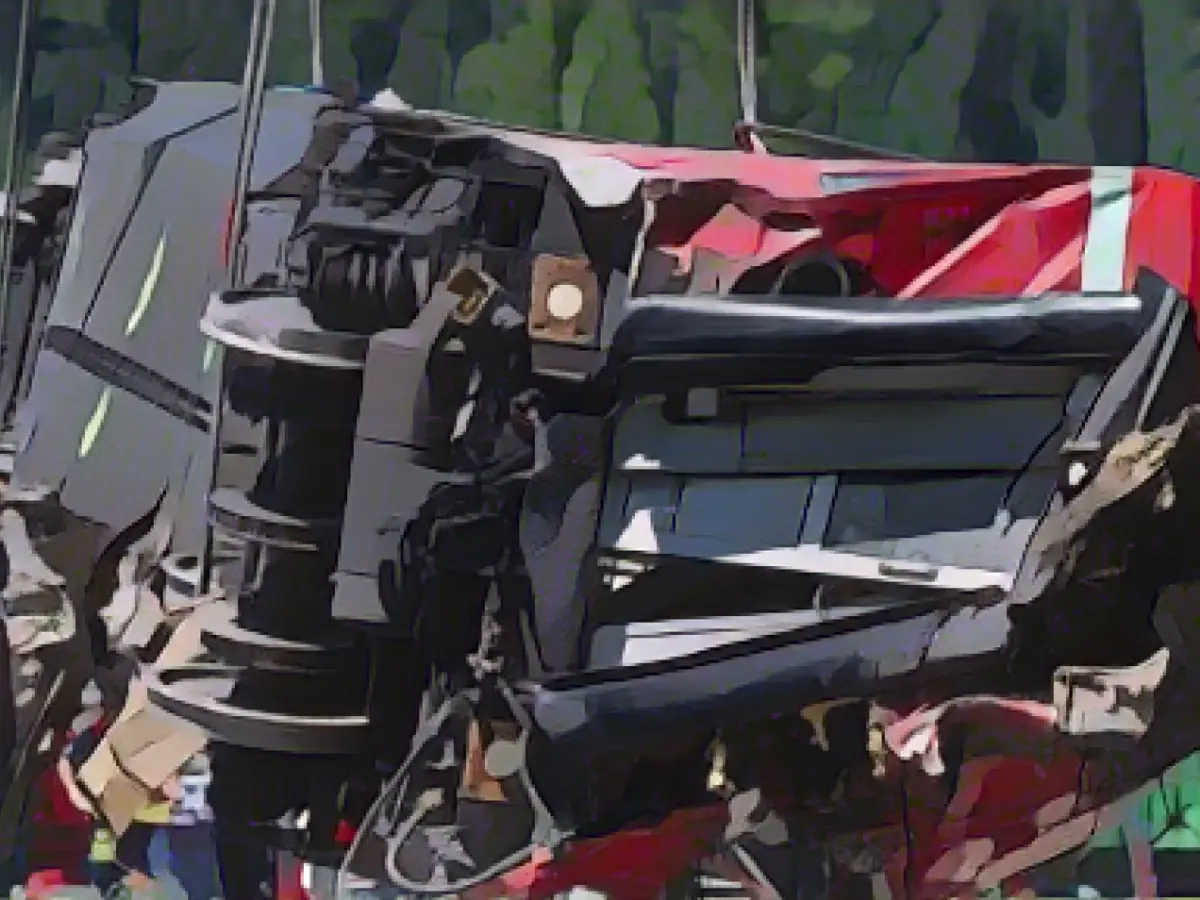Accidents - Indictment after Garmisch train crash: Was it negligence?
It's the last day of school before the Whitsun vacations, pupils are on their way home. On June 3, 2022 at around 12.15 p.m., a regional train derails in the Garmisch-Partenkirchen vacation region. Wagons overturn, injured people are rescued from windows, debris is strewn about. Four women and a 13-year-old boy die. 78 people are injured, some of them seriously. Now those allegedly responsible could be held legally accountable: One and a half years after the accident, there are charges against three railroad employees, according to dpa information. This was first reported by the Bild newspaper.
The investigators are accusing them of negligent homicide and negligent bodily harm. The Munich II public prosecutor's office did not wish to comment. The court will now have to decide whether the case will go to trial once the charges have been filed. Initially, five railroad employees were under investigation. The proceedings were dropped in two cases.
Lengthy investigations
For weeks after the accident, the Soko "Zug" (train investigation unit) at the police headquarters of Upper Bavaria South had been investigating. The officers questioned passengers on the train involved in the accident and called on witnesses to provide pictures and videos for the investigation.
According to an interim report published by the Federal Railway Accident Investigation Bureau on the anniversary of the accident in the summer, damaged concrete sleepers had caused the accident.
In the report, the accident investigators identified a "defect in the superstructure" of the railroad line as the primary cause of the derailment of the regional train. The prestressed concrete sleepers laid at the scene of the accident had been damaged, which had led to the so-called rail supports, the connecting links between the rails and concrete, breaking away. After the accident, Deutsche Bahn announced that it would inspect several hundred thousand concrete sleepers and replace them if necessary. The final report from the Federal Office is still pending.
Warning not passed on?
There have been several speculations that a warning was not passed on before the accident due to a problem at the subsequent accident site. According to media reports - including the "Süddeutsche Zeitung" - a corresponding message from a train driver was allegedly not passed on. The train driver was said to have noticed something "unusual".
It is still not clear how the damage to the sleepers could have occurred. The subsoil and geological conditions in the area of the accident were also repeatedly discussed, and experts were consulted. After the resumption of train services, trains were temporarily only allowed to travel at reduced speed at the accident site as a precaution. Rail traffic had previously been completely suspended for five months.
Railroad embankment as a potential problem
After the accident, scenarios for possible causes of the accident were presented at a press conference of the German Train Drivers' Union (GDL), which focused on the subsoil of the railroad embankment. According to the consultants invited by the GDL at the time, one factor could have been the relocation of a torrent during the expansion of the Bundesstraße 2 highway around 20 years ago. The stream now runs between the main road and the track. The water could have contributed to the instability of the very high railroad embankment, explained Hamburg public transport consultant Dieter Doege and Michael Jung from the environmental association Prellbock Altona in July 2022. There has been no official confirmation of this theory to date.
Read also:
- A clan member is punished here
- Traffic lawyer warns: Don't talk to the police!
- Will he be convicted as Jutta's murderer after 37 years?
- He also wanted to kill his cousin
- The regional train derailment in Garmisch-Partenkirchen resulted in four women and a boy's death, as well as 78 injuries, some of them severe.
- The investigation following the accident in June 2022 identified damaged concrete sleepers as the primary cause of the derailment.
- Authorities believe negligence may have played a role in the accident, leading to charges against three railroad employees.
- The Munich II public prosecutor's office is not commenting on the charges, awaiting the court's decision to proceed with the case.
- Initial investigations included five railroad employees, with charges dropped in two cases.
- The Federal Railway Accident Investigation Bureau released an interim report detailing the causes of the accident, with the final report yet to be released.
- Deutsche Bahn took action following the accident, inspecting and replacing if necessary, several hundred thousand concrete sleepers.
- Speculations suggest a warning may not have been passed on before the accident, due to a problem at the subsequent accident site.
Source: www.stern.de








